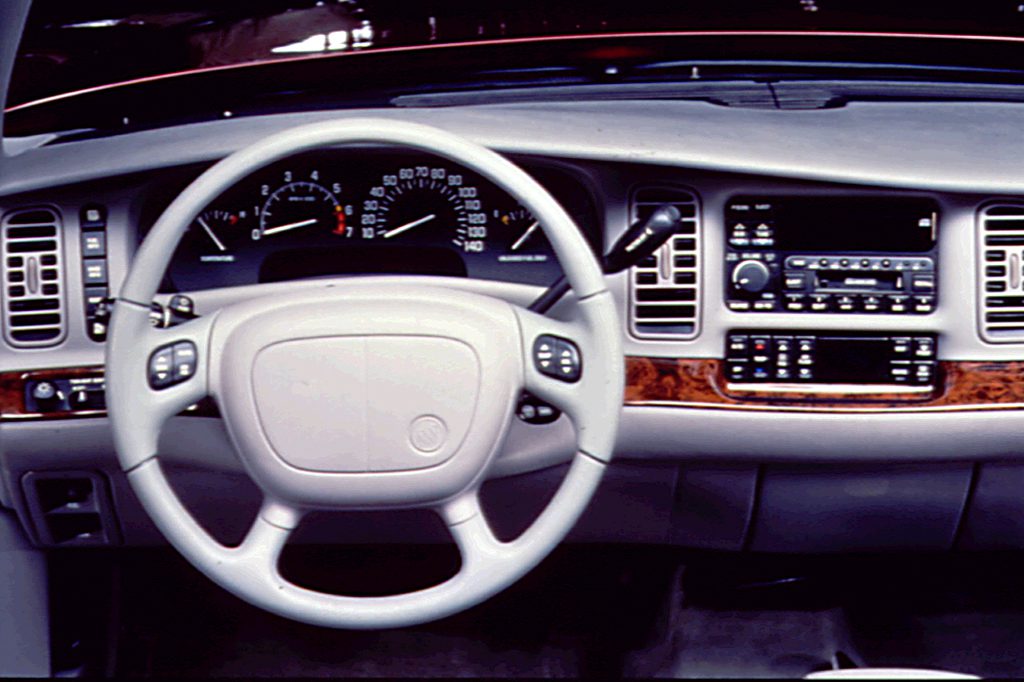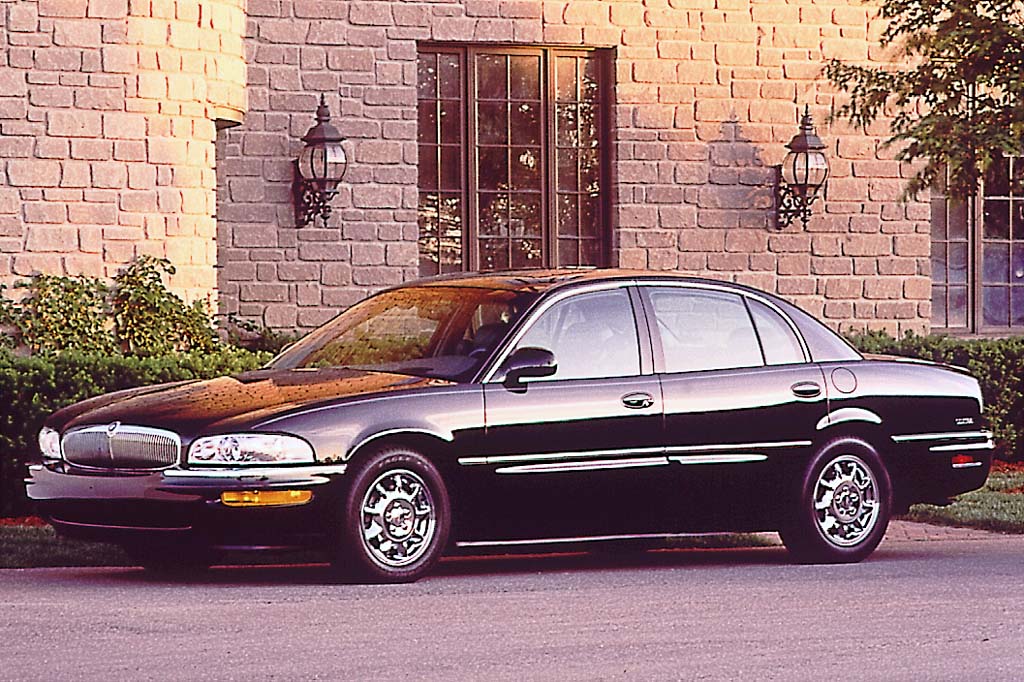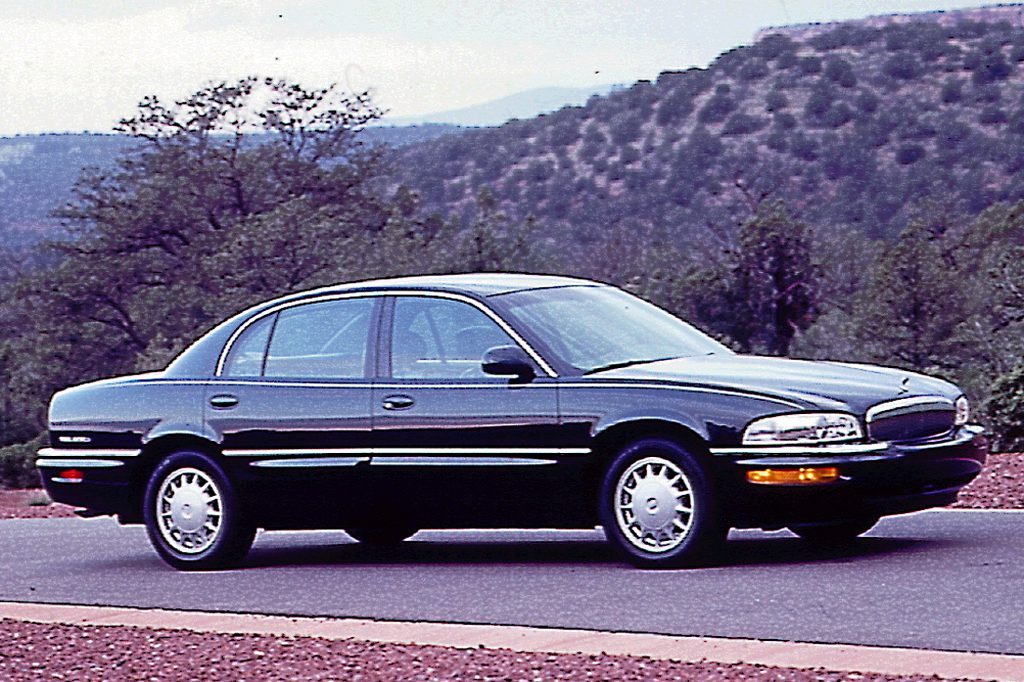| Premium large car; Built in USA |
|
|
| Good condition price range: $2,300 – $8,000* |

1998 Buick Park Avenue Ultra

2000 Buick Park Avenue

1998 Buick Park Avenue interior

2000 Buick Park Avenue Ultra

1999 Buick Park Avenue
| Pros: |
|
| Cons: |
|
What do you get from a Park Avenue? Mainly, traditional American virtues– roominess, power, and amenities–at a sensible price. This domestic sedan is definitely worth a close look, though some of its virtues can be found in Buick’s LeSabre for less money. In addition, it must be said that Buick’s customer satisfaction ratings have not been as high as those of some foreign competitors.
Overview
Redesigned for 1997, Buick’s “flagship” front-drive luxury sedan faced such rivals as the Infiniti I30, Lexus EX 300, and Oldsmobile Aurora. Wheelbase grew by three inches, overall length by about an inch. Weight also went up, by some 250 pounds. Styling was strictly evolutionary. Two models went on sale: a base Park Avenue and the plusher Park Avenue Ultra. Each carried a 3.8-liter V6 engine, but the one in the Ultra was supercharged to deliver 240 horsepower. The base V6 was rated at a more modest 205 horsepower. Both were teamed with a revised 4-speed automatic transmission, whose new electronic torque converter clutch was designed to produce smoother shifts. A redesigned interior featured unique seats that anchored both the lap and shoulder belts to the seat itself. The belts moved with the seats, to improve comfort for very tall or very short drivers. Buick’s Personal Choice system, standard in Park Avenue, included a remote entry transmitter that could automatically adjust the driver’s seat, outside mirrors, automatic door locks, lighting, and other accessories to either of two settings. This year, it added sound and climate adjustments, retained accessory power, and daytime running lights. A newly optional head-up display projected speedometer and other gauge readings onto the windshield. Also joining the option list: rain-sensing wipers and a dust filter for the automatic climate-control system.
Yearly Updates
| 1998 Park Avenue Park Avenue sedan gained some enhanced safety and convenience features for 1998. Dual airbags got reduced inflation power to deploy with less force (but still meet federal safety standards). A new passenger-side mirror, standard on Ultra and optional on the base model, tilted downward when reverse gear was engaged. Buick dealers could now install GM’s OnStar communications system. That system linked the car by satellite and cellular telephone to a 24-hour GM center from which advisors could provide directions and travel advice, and also notify local authorities during an emergency situation. |
| 1999 Park Avenue Changes were modest for ’99, including the addition of “Elite Walnut” interior trim to the Park Avenue Ultra, and availability of a tire-pressure monitor gauge. The tire-monitor was standard on the Ultra edition. |
| 2000 Park Avenue Front side airbags went into both 2000 models. GM’s StabiliTrak system became standard on the Ultra and optional on the base Park Avenue. Designed to sense an impending skid in a turn and apply the brakes to an individual wheel, to keep the car on its intended course. Both models also gained child-seat anchors on the rear package shelf. |
| 2001 Park Avenue Ultrasonic rear parking assist was a new option for 2001, while leather upholstery and an interior memory system became standard on base models. |
| 2002 Park Avenue Steering-wheel radio and climate controls became standard on both models for 2002. |
| 2003 Park Avenue Ultra gets three chrome-plated “VentiPorts” on each front fender. Associated with Buick since 1949 and last seen in the 1980s, these design icons also increase engine-compartment airflow, Buick says. Other retro additions to Ultra are a “waterfall” grille, tri-shield Buick insignia, and chrome exhaust tips. |
| 2004 Park Avenue No significant changes were made in ’04. |
| 2005 Park Avenue In ’05, Park Avenue gets revisions to grille and taillamps, and the base model gains the front-fender “portholes” previously reserved for the top-line Park Avenue Ultra. Buick says 2005 is the final model year for Park Avenue. |

